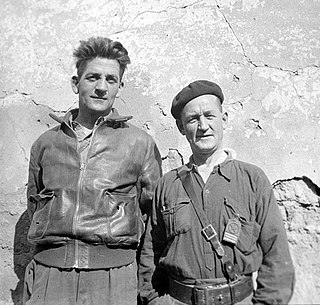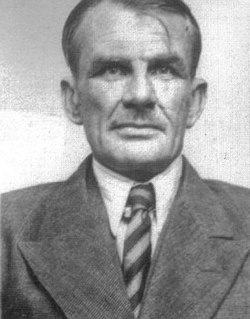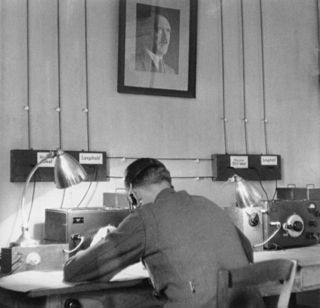
Plan Kathleen, sometimes referred to as the Artus Plan, was a military plan for the invasion of Northern Ireland by Nazi Germany, sanctioned in 1940 by Stephen Hayes, Acting Irish Republican Army (IRA) Chief of Staff.

Operation Green often also referred to as Case Green or Plan Green, was a full-scale operations plan for a Nazi German invasion of Ireland planned by an unknown German officer known by the alias "Hadel" in support of Operation Sea Lion, the invasion of the United Kingdom, during World War II. Despite its detailed nature, Operation Green is thought to have been designed only as a credible threat, a feint, not an actual operation. Plan W, a planned occupation of all of the Free State by the British Armed Forces, was drafted by the British military in secret liaison with the Irish government to counteract any German invasion.

Frank Ryan was an Irish politician, journalist, intelligence agent and paramilitary activist. He first came to prominence as an Irish republican activist at University College Dublin and fought for the Irish Republican Army during the Irish Civil War. Ryan fell under the influence of Peadar O'Donnell, an advocate of Marxist-Leninism within Irish republicanism, which resulted in him breaking with the IRA and becoming involved with founding a new political organisation, the Republican Congress, and editing its associated newspaper: An Phoblacht.

Hermann Görtz was a German spy in Britain and Ireland before and during World War II, liaising with the Irish Republican Army (IRA). After the war, he committed suicide rather than be deported from Ireland to Germany.
Operation Lobster I was an Abwehr plan to infiltrate three German agents into Ireland, in July 1940. It was part of a wider series of missions carried out within the framework of Operation Lobster during World War II.
In 1940 the Germans decided to send agents and saboteurs to infiltrate Britain from Norway and northern France. This plan was given the codename Operation Lobster. It remained in place despite the collapse of plans for the invasion of Britain in Operation Sea Lion.
Operation Seagull was an Abwehr II/Brandenburger Regiment-sanctioned mission launched in September 1940. The object of the mission was to infiltrate the UK in preparation for Operation Sea Lion.
Operation Seagull I was an Abwehr II sanctioned mission devised in May 1942. The plan was the brainchild of Kurt Haller and an expert from Abwehr I-Wi (economic). The plan envisioned the use of an Abwehr agent to sabotage the North Scottish power station at Fort William.
Operation Seagull II was an Abwehr II. sanctioned mission planned in June 1942 as a refinement of Operation Seagull I. The plan envisioned in Seagull II was to use an Irish Abwehr agent ("V-Manner"), who would parachute into the area of south-east of Ballycastle in Northern Ireland, recruit a sabotage team from any willing IRA personnel in the area, and attack important "targets of opportunity" in the immediate vicinity. Both operations were to be controlled by radio and with each sabotage team in Ireland and Scotland liaising with each other via radio contact.
Operation Dove also sometimes known as Operation Pigeon, was an Abwehr sanctioned mission devised in early 1940. The plan envisioned the transport of IRA Chief of Staff Seán Russell to Ireland, and on the arrival of Frank Ryan in Berlin three days before the launch of the operation, it was also decided to transport him during the operation.
Operation Osprey was a plan conceived by the German Foreign Ministry and Abwehr II. mid-1942. The plan was an enlargement of Operation Whale. Planning took place in the context of American troops landing in Northern Ireland 26 January 1942, and Hitler's immediate fears surrounding this.
Friesack Camp or Camp Friesack was a special World War II prisoner of war camp where a group of Irishmen serving in the British Army volunteered for recruitment and selection by Abwehr II and the German Army. The camp was designated Stalag XX-A (301) and located in the Friesack area, Brandenburg region. The training and selection by Abwehr II and the German Army occurred during the period 1940–1943.
John Codd was an Irish-born British-based soldier who, after being captured as a British Army corporal during World War II, went on to serve in the German Intelligence service (Abwehr) and SS Intelligence.
The Irish Republican Army (IRA), a paramilitary group seeking to remove Northern Ireland from the United Kingdom and unify Ireland, shared intelligence with the Abwehr, the military intelligence service of Nazi Germany.
Operation Whale was the name of two separate German Intelligence (Abwehr) plans conceived in 1940.
Operation Mainau was a German espionage mission during the Second World War. It was sanctioned and planned by the German secret service (Abwehr) and executed successfully in May 1940. The mission plan involved inserting Abwehr agent Hermann Görtz into Ireland by parachute.
Operation Innkeeper was an aborted plan devised in Autumn 1941 to send two Irish Abwehr agents to London on a sabotage mission.
Günther Schütz was a German citizen who worked for German Intelligence (Abwehr) during World War II, he was deployed to Ireland, however, due to being parachuted into the wrong location he was apprehended by Irish police, and spent much of the rest of the war in prison, bar a brief period on the run after escaping from prison and failed to be evacuated to France.

The Abwehr was the German military-intelligence service for the Reichswehr and the Wehrmacht from 1920 to 1944. Although the 1919 Treaty of Versailles prohibited the Weimar Republic from establishing an intelligence organization of their own, they formed an espionage group in 1920 within the Ministry of Defence, calling it the Abwehr. The initial purpose of the Abwehr was defence against foreign espionage: an organizational role which later evolved considerably. Under General Kurt von Schleicher the individual military services' intelligence units were combined and, in 1929, centralized under Schleicher's Ministeramt within the Ministry of Defense, forming the foundation for the more commonly understood manifestation of the Abwehr.